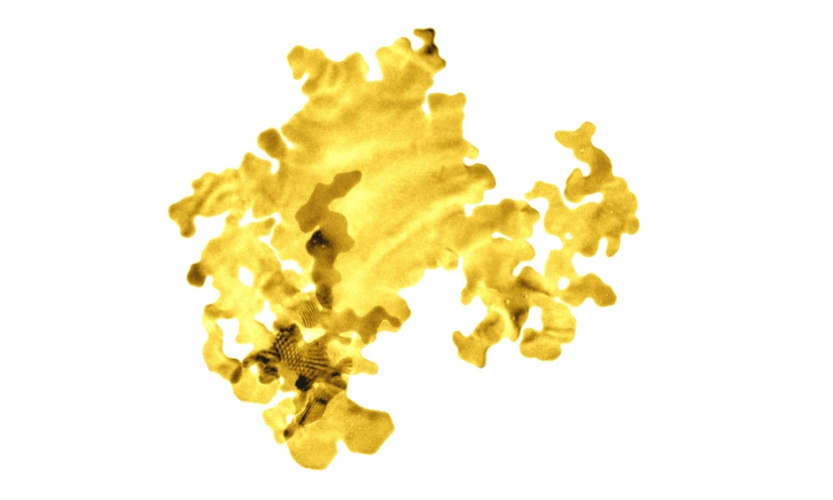
The 2D material, which consists of two layers of atoms sitting on top of each other in a sheet, has been developed by researchers at Leeds University.
The material could be used to create extremely sensitive home biomedical testing devices, as well as in pharmaceutical development and waste water treatment, according to Dr Sunjie Ye, from Leeds' Molecular and Nanoscale Physics Group and the Leeds Institute of Medical Research. Ye is lead author of a paper describing the work, which was published in the journal Advanced Science.
To synthesise the material, the researchers added chloroauric acid, an inorganic substance containing gold, and a reducing agent, sodium citrate acid aqueous solution, into a solution of a “confinement agent”, methyl orange.
After being kept undisturbed for 12 hours at an ambient temperature, the chloroauric acid was reduced to its metallic form, with the confinement agent having encouraged the gold to form a two atom-thick sheet, said Ye.
The gold appears green in water, as a result of its nanoscale dimensions, so the researchers have dubbed it gold nanoseaweed.
When the researchers tested the ultra-thin gold, they found that it is 10 times more efficient as a catalytic substrate than existing 3D gold nanoparticles.
The researchers now plan to scale up the process to industrial levels.
The material could be used for nanoenzyme-enabled ultra-sensitive bio-sensing devices that can be operated at home, in which the results can be observed by the naked eye through a simple colour change.
“The ultra-sensitivity will enable the detection of analytes at very low concentration,” said Ye. “This will facilitate the early detection of disease and also the monitoring of therapeutic effect, in particular cancer treatment after surgery.”
The material’s catalytic properties also means it could be used to transform some industrial waste into useful resources for synthesising pharmaceutical molecules, Ye said.
“It also has a potential application in water treatment, by providing an effective degradation of organic pollutants in waste water,” she said.
The flakes are also flexible, meaning they could form the basis of electronic components for bendable screens, electronic inks and transparent conducting displays.




Red Bull makes hydrogen fuel cell play with AVL
Formula 1 is an anachronistic anomaly where its only cutting edge is in engine development. The rules prohibit any real innovation and there would be...